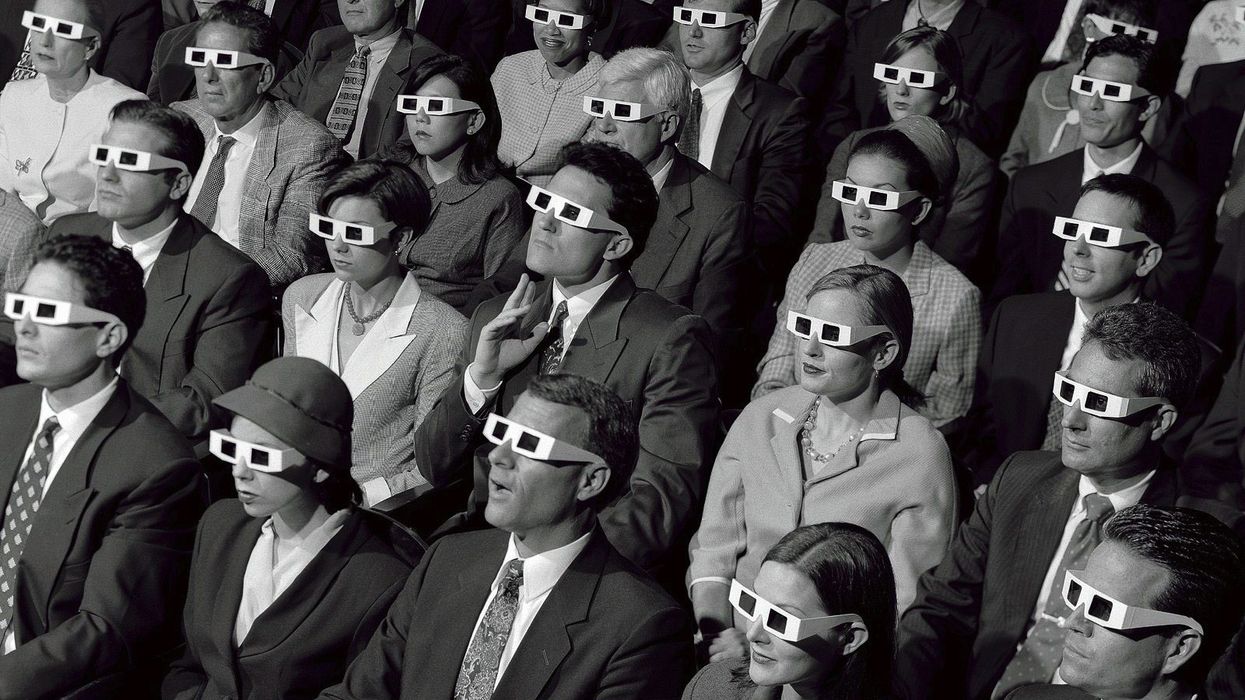How Will We Make & Exhibit Films in the Future?
In the 125 years since the birth of cinema, we've seen tiny nickelodeons become massive IMAX projections, live orchestral music become booming Dolby Atmos surround sound, and, of course, Annabelle Serpentine Dance become Step Up 3D.

There have been so many advancements in how we make and exhibit films that one has to wonder -- what's next? Where are we headed? In terms of exhibition, I think the word on the tip of everyone's tongue is "immersion" -- the Oculus Rift giving users a glimpse inside a virtual world that you can move and look around in, even projection mapping and the Kinect allowing moving images to exist off-screen and in our natural world.
Here to kick off what will surely be a lively discussion is Film School'd. In this video, they take us back to the beginning of cinema, highlight the technological breakthroughs through the years, and then talk about what could possibly take this art form to the next level.
The way we make movies is always changing and evolving -- robot arms that complete camera moves for you, full performance motion-capture, 4K digital recording, digital recording, period! The amazing work of Chivo Lubezki and Alfonso Cuarón on Gravity showed us last year how actors can interact with virtual environments that they can see on LED light panels through projection mapping -- rather than trying to perform surrounded by green screens.
But what about exhibition? Immersion -- blurring the line between reality and virtual reality -- that seems to be where this train is headed. We've already seen countless attempts to make watching a film more immersive: bigger screens to make images larger and more immediate, surround sound to make you think those explosions are happening right next to you, transmedia so you can experience the film's world across multiple platforms, 3D to trick your brain into thinking objects are no longer on a flat screen, but within your natural world. Hell, there is even Secret Cinema, a company that turns a film, like Back to the Future, into a real-life experience, 4DX theaters that utilizes seat motion, as well as bubbles, smoke, and more to replicate conditions within the film.
And damn -- Smell-O-Vision was a thing, you guys.
As cinematic (and gaming) technology matures and becomes more sophisticated, we're starting to see more and more opportunities for interaction. The video mentions Microsoft's Illumiroom, which uses a projector and a Kinect to extend video game environments into the room you're playing in. Though this projection technology, as well as motion detection, like that of the Wii, is mainly geared toward gaming, it could easily transfer over to film.
But, is this where we want to go? Do we want our films to be more immersive -- to become virtual worlds that we can walk around in and interact with? Is a medium born on a two-dimensional plane supposed to extend out into a 3rd dimension? Would that, as well as interaction, make it a different medium all together?
Source: CineFix














